Reviews
Heidi Ewing and Rachel Grady
USA, 2012
Credits
Review by Katherine Follett
Posted on 17 May 2012
Source Projected DVD
Categories The 2012 Independent Film Festival Boston
This year, the Independent Film Festival of Boston presented two documentaries about the decline of Detroit. Burn focused on the city’s firefighters as they battle an onslaught of arson, neglect, and budget shortfalls while Detroit’s population flees. Detropia filmmakers Heidi Ewing and Rachel Grady choose to view the city through a wide-angle lens, following a range of people who create a haunting collage of an entire American landscape in decline.
You can see why filmmakers find poetry in the empty-socketed wastes of this post-industrial city. Many shots in Detropia linger on empty homes, deserted streets, and crumbling warehouses. The buildings are haunted, spookily beckoning. Spots of eerie, scrappy life pop up here and there through squatters, opportunists, graffiti artists, and even the encroaching prairie. Expert filming, editing, and a pitch-perfect soundtrack only enhance the sad loveliness.
The citizens who remain in Detroit also seem unaccountably drawn to the beauty of this decay, even as they lament the loss of the city’s vitality. A blogger who makes her living as a barista spends her free time spelunking in abandoned apartment houses, wistfully imagining the lives of those who left. A group of unemployed men ransack an industrial building at dusk, carting off what scrap metal they can sell and then gathering around a fire to muse on the strange economy they find themselves in, correctly speculating where both the lost manufacturing jobs and their current scavenging go (China, where as one man succinctly put it, “they can make shit and send it back here and sell it for more.”) A young opera singer delights in the acoustics of an enormous, empty, window-blown building. Through the eyes of this documentary, the melancholy of the fading city is strangely compelling.
But Detropia is not content to dwell on haunting decay. The filmmakers take pains to show the frustration and sadness of those who remember what Detroit used to be. Union president George McGregor is caught in the middle as he fights for living wages and benefits for the workers he represents without spooking the management to move the company overseas (they eventually leave for Mexico). Throughout his losing battle, he remains cheerfully nostalgic for Detroit’s past: the Cadillacs, Motown music, and sense of self-determination that used to be the rewards of Michigan manufacturing. Retired schoolteacher Tommy Stevens owns a nightclub near plants that have already been abandoned. Though his tavern is a rare spot of light, sound, and happiness in the neighborhood, he recalls how much better things used to be, and he is pointedly pessimistic about the future. He attends an annual car expo and sees Chinese manufacturers displaying an electric car for half the price of the much-ballyhooed Chevy Volt. When a GM salesperson insists that the American-made models are superior in quality, Stevens wisely replies, “That’s what you guys said about Hondas thirty years ago.” Stevens opines that Detroit is a bell-wether for the rest of the United States, that the loss of manufacturing will drag down the economy, influence, and quality of life of the entire nation. Those of us who are lucky enough to live where the recession landed only a glancing blow might dismiss this idea if Stevens hadn’t already proved himself so astute.
While the film mostly keeps a hands-off tone, letting the subjects speak for themselves, it does aim a notably jaundiced eye toward the few possibilities for revitalization. Mayor David Bing’s plan to abandon peripheral neighborhoods and relocate citizens closer to the center of the city is met with some outrage, but mostly a shrugging futility. One citizen nonchalantly comments that the mayor’s plans are irrelevant because nobody in Detroit can ever get anything done anyway. A few scenes take place at the Detroit Opera, an opulent holdout of the auto industry’s remaining barons, but it too falls victim to budget shortfalls. With the freefall of real-estate prices came a small influx of bohemians, whose race and background stand in stark contrast to the mostly African-American working- to middle-class families that have seen their livelihoods disappear. A few of these outsiders display the worst of disaster tourism. A pair of artists who met in Hawaii marvel at the apartment they can afford, and then literally “put a bird on it” on an abandoned building. A European man orders coffee at the cafe where blogger Crystal Starr works, obliviously complimenting her on her city’s appealing decay (and then huffily insisting that his “Harry Potter” glasses were “inspired by Italian architecture!”). What saves the filmmakers themselves from falling into a similar trap is their continuing respect for the citizens of Detroit and their grounding worry that this city may only be the first step in a nationwide decline. Given that this isn’t 2012’s only powerful feature documentary on the downfall of this city, it’s a worry worth taking seriously.
More The 2012 Independent Film Festival Boston
-
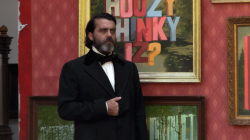
Beauty is Embarrassing
2012 -

Gregory Crewdson: Brief Encounters
2012 -
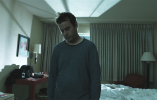
Sleepwalk with Me
2012 -

Liberal Arts
2010 -

Burn
2012 -

All-Ages: The Boston Hardcore Film
2012 -
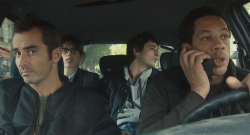
Polisse
2011 -

Sun Don’t Shine
2012 -

Headhunters
2011 -

Cerro Rico, Tierra Rica
2011 -
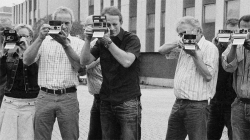
Time Zero: The Last Year of Polaroid Film
2011 -

Jason Becker: Not Dead Yet
2012 -

Detropia
2012 -

Girl Model
2011 -

Under African Skies
2012 -

The Central Park Effect
2012 -
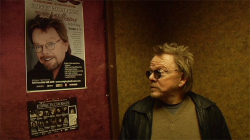
Paul Williams: Still Alive
2011 -

Trishna
2012 -

The Queen of Versailles
2012
We don’t do comments anymore, but you may contact us here or find us on Twitter or Facebook.



